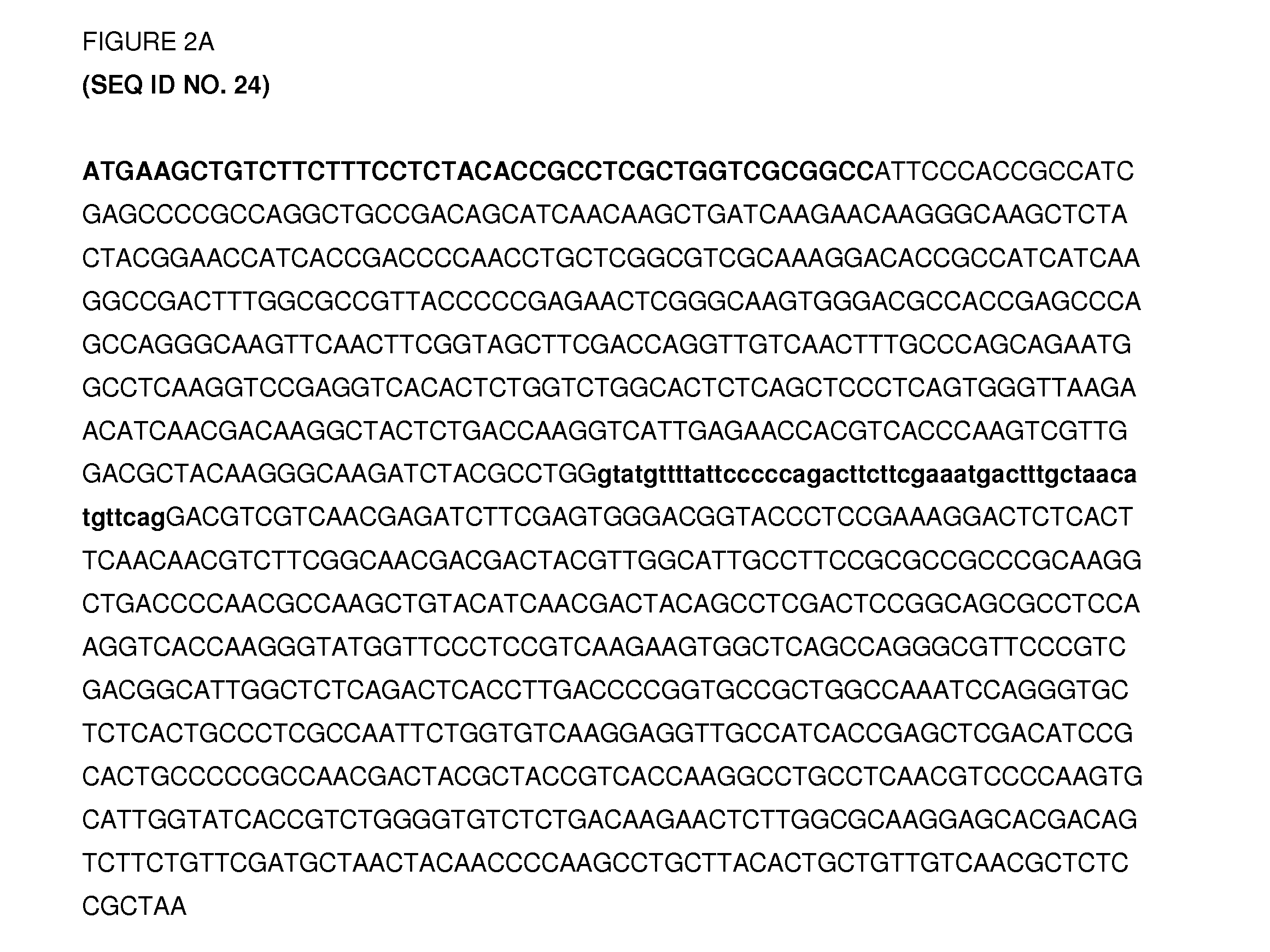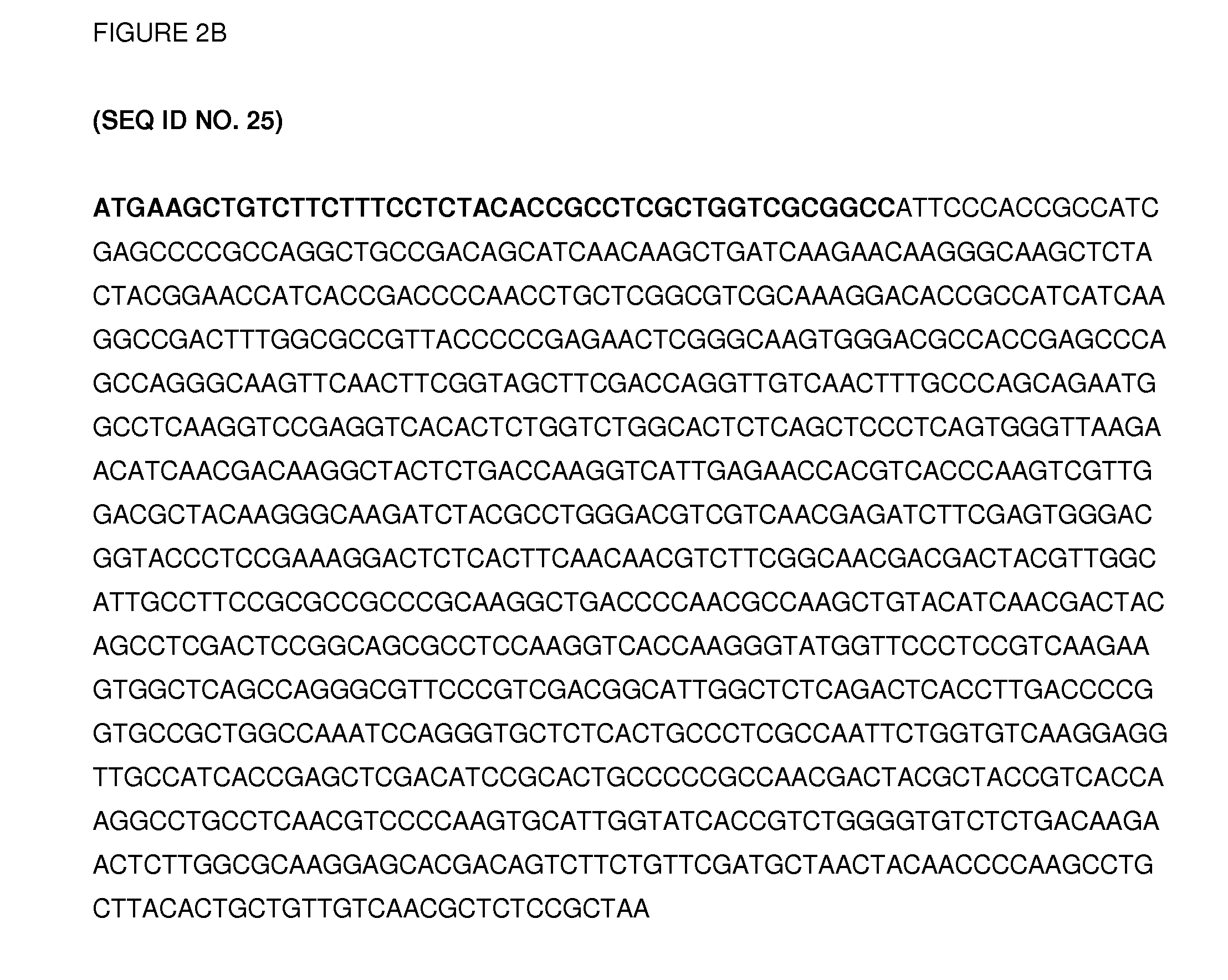Methods for Improving By-Products from Fermentation Processes Using Xylanase
a technology of xylanase and by-products, which is applied in the direction of fatty oil/acid recovery from waste, fatty substance recovery, enzymology, etc., can solve the problem of translating the amino acid sequence differences into the functional differences of xylanases, and achieve the effect of increasing the oil recovery
- Summary
- Abstract
- Description
- Claims
- Application Information
AI Technical Summary
Benefits of technology
Problems solved by technology
Method used
Image
Examples
example 1
Materials and Methods
Plasmid and Library Construction
[0768]A DNA sequence containing the coding region for xylanase 4 (the family GH10) from the filamentous fungus Fusarium verticilloides, FveXyn4, was amplified from the genomic DNA with the gene specific primers extended with the attB1 and attB2 sites to allow for the Gateway® BP recombination cloning into the pDonor221 vector (Invitrogen, USA). The pEntry-FveXyn4 plasmid, as shown in FIG. 20 was used by the vendors BaseClear (Netherlands) and Geneart GmH (Germany) as template for construction of combinatorial libraries.
[0769]Variants of FveXyn4 was generated either as combinatorial libraries or by introduction of specific mutations and were designed to included different numbers and combinations of the mutations presented in Table 1. Variant A, B, C, D, and E were included in these variants.
[0770]Combinatorial variants were generated via the Gateway® recombination technique (Invitrogen, USA) with the destination vector pTTTpyr2 (F...
example 2
Cloning of Fusarium verticillioides Backbone (Parent) Xylanase (FveXyn4)
[0807]Genomic DNA isolated from a strain of Fusarium verticillioides was used for amplifying a xylanase gene. The sequence of the cloned gene, called the FveXyn4 gene, is depicted in SEQ ID No. 2. The mature protein encoded by the FveXyn4 gene is depicted in SEQ ID No. 1. The protein product of gene FveXyn4 belongs to glycosyl hydrolase family 10 (GH10) based on the PFAM search (http / / pfam.sanger.ac.uk / ).
example 3
Expression of FveXyn4 Backbone (Parent) Protein
[0808]The FveXyn4 gene was amplified from genomic DNA of Fusarium verticillioides using the following primers: Primer 1 5′-caccATGAAGCTGTCTTCTTTCCTCTA-3′ (SEQ ID No. 22), and Primer 2 5′-TTTTTAGCGGAGAGCGTTGACAACAGC-3′ (SEQ ID No. 23). The PCR product was cloned into pENTR / D-TOPO vector (Invitrogen K2400) to generate the FveXyn4 pEntry plasmid. The expression plasmid pZZH254 was obtained by Gateway cloning reaction between the FveXyn4 pEntry plasmid and pTrex3gM expression vector (described in US 2011 / 0136197 A1) using Gateway® LR Clonase® II enzyme kit (Invitrogen 11791). A map of plasmid pZZH254 is provided as FIG. 16. The sequence of the FveXyn4 gene was confirmed by DNA sequencing (SEQ ID No. 2). The plasmid pZZH254 was transformed into a quad deleted Trichoderma reesei strain (described in WO 05 / 001036) using biolistic method (Te'o V S et al., J Microbiol Methods, 51:393-9, 2002).
[0809]Following sequence confirmation, protoplasts of...
PUM
| Property | Measurement | Unit |
|---|---|---|
| time | aaaaa | aaaaa |
| time | aaaaa | aaaaa |
| molecular weights | aaaaa | aaaaa |
Abstract
Description
Claims
Application Information
 Login to View More
Login to View More - R&D
- Intellectual Property
- Life Sciences
- Materials
- Tech Scout
- Unparalleled Data Quality
- Higher Quality Content
- 60% Fewer Hallucinations
Browse by: Latest US Patents, China's latest patents, Technical Efficacy Thesaurus, Application Domain, Technology Topic, Popular Technical Reports.
© 2025 PatSnap. All rights reserved.Legal|Privacy policy|Modern Slavery Act Transparency Statement|Sitemap|About US| Contact US: help@patsnap.com



